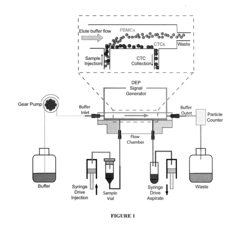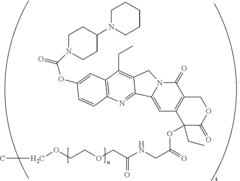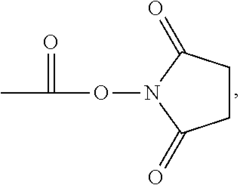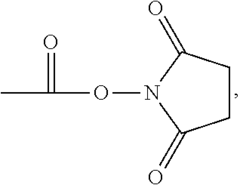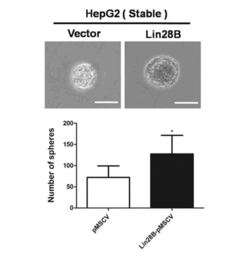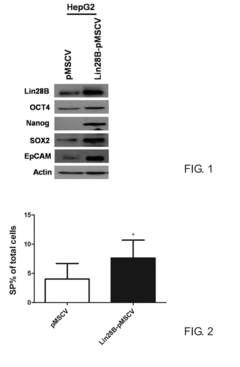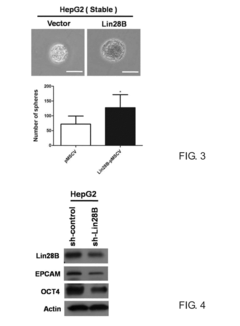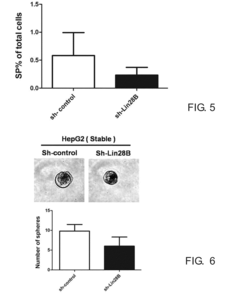Cori Cycle In Cancer Metabolism: Experimental Design For Studies
AUG 21, 20259 MIN READ
Generate Your Research Report Instantly with AI Agent
Patsnap Eureka helps you evaluate technical feasibility & market potential.
Cancer Metabolism Research Background and Objectives
Cancer metabolism research has gained significant attention in recent years due to its potential to uncover novel therapeutic targets and improve our understanding of tumor biology. The Cori Cycle, also known as the glucose-lactate cycle, plays a crucial role in cancer metabolism and has become a focal point for researchers seeking to elucidate the complex metabolic processes within cancer cells.
The primary objective of studying the Cori Cycle in cancer metabolism is to comprehensively investigate the altered metabolic pathways that contribute to tumor growth and progression. By focusing on this specific cycle, researchers aim to unravel the intricate relationships between glucose utilization, lactate production, and energy metabolism in cancer cells. This knowledge is essential for developing targeted therapies and improving diagnostic techniques.
One of the key goals in this research area is to elucidate the mechanisms by which cancer cells preferentially utilize glucose through aerobic glycolysis, a phenomenon known as the Warburg effect. Understanding how the Cori Cycle is dysregulated in cancer cells can provide valuable insights into this metabolic reprogramming and its implications for tumor growth and survival.
Additionally, researchers aim to explore the potential therapeutic implications of targeting the Cori Cycle in cancer treatment. By identifying key enzymes and regulatory molecules involved in this metabolic pathway, scientists hope to develop novel strategies for disrupting cancer cell metabolism and inhibiting tumor growth.
The study of the Cori Cycle in cancer metabolism also seeks to investigate the interactions between tumor cells and the surrounding microenvironment. This includes examining how cancer cells influence and are influenced by neighboring normal cells, immune cells, and stromal components through metabolic crosstalk.
Furthermore, researchers aim to develop advanced experimental techniques and models to accurately measure and manipulate the Cori Cycle in cancer cells. This includes the use of stable isotope tracing, metabolomics, and in vivo imaging technologies to track metabolic fluxes and assess the impact of various interventions on cancer metabolism.
Another important objective is to explore the potential of the Cori Cycle as a biomarker for cancer diagnosis, prognosis, and treatment response. By identifying specific metabolic signatures associated with this cycle, researchers hope to develop more accurate and less invasive diagnostic tools for early cancer detection and monitoring.
In conclusion, the background and objectives of cancer metabolism research, particularly focusing on the Cori Cycle, encompass a wide range of goals aimed at unraveling the complex metabolic processes in cancer cells. These efforts are crucial for advancing our understanding of cancer biology and developing more effective therapeutic strategies to combat this devastating disease.
The primary objective of studying the Cori Cycle in cancer metabolism is to comprehensively investigate the altered metabolic pathways that contribute to tumor growth and progression. By focusing on this specific cycle, researchers aim to unravel the intricate relationships between glucose utilization, lactate production, and energy metabolism in cancer cells. This knowledge is essential for developing targeted therapies and improving diagnostic techniques.
One of the key goals in this research area is to elucidate the mechanisms by which cancer cells preferentially utilize glucose through aerobic glycolysis, a phenomenon known as the Warburg effect. Understanding how the Cori Cycle is dysregulated in cancer cells can provide valuable insights into this metabolic reprogramming and its implications for tumor growth and survival.
Additionally, researchers aim to explore the potential therapeutic implications of targeting the Cori Cycle in cancer treatment. By identifying key enzymes and regulatory molecules involved in this metabolic pathway, scientists hope to develop novel strategies for disrupting cancer cell metabolism and inhibiting tumor growth.
The study of the Cori Cycle in cancer metabolism also seeks to investigate the interactions between tumor cells and the surrounding microenvironment. This includes examining how cancer cells influence and are influenced by neighboring normal cells, immune cells, and stromal components through metabolic crosstalk.
Furthermore, researchers aim to develop advanced experimental techniques and models to accurately measure and manipulate the Cori Cycle in cancer cells. This includes the use of stable isotope tracing, metabolomics, and in vivo imaging technologies to track metabolic fluxes and assess the impact of various interventions on cancer metabolism.
Another important objective is to explore the potential of the Cori Cycle as a biomarker for cancer diagnosis, prognosis, and treatment response. By identifying specific metabolic signatures associated with this cycle, researchers hope to develop more accurate and less invasive diagnostic tools for early cancer detection and monitoring.
In conclusion, the background and objectives of cancer metabolism research, particularly focusing on the Cori Cycle, encompass a wide range of goals aimed at unraveling the complex metabolic processes in cancer cells. These efforts are crucial for advancing our understanding of cancer biology and developing more effective therapeutic strategies to combat this devastating disease.
Market Demand for Cancer Metabolism Studies
The market demand for cancer metabolism studies, particularly those focusing on the Cori Cycle, has been steadily increasing in recent years. This growth is driven by the rising global cancer burden and the need for more effective treatment strategies. Cancer metabolism research offers promising avenues for developing targeted therapies and improving patient outcomes.
The pharmaceutical industry has shown significant interest in cancer metabolism studies, recognizing the potential for novel drug targets. Major pharmaceutical companies are investing heavily in research and development projects aimed at understanding and exploiting cancer-specific metabolic pathways. This investment is reflected in the increasing number of clinical trials targeting metabolic processes in cancer cells.
Academic institutions and research centers worldwide are also contributing to the growing demand for cancer metabolism studies. Grants and funding opportunities for research in this field have expanded, indicating the scientific community's recognition of its importance. Collaborations between academia and industry are becoming more common, further driving the market demand for innovative research tools and technologies.
The Cori Cycle, also known as the glucose-lactate cycle, has gained particular attention in cancer metabolism research. Its role in tumor progression and metastasis has made it a focal point for many studies. The demand for experimental designs and methodologies to investigate the Cori Cycle in cancer metabolism is increasing, as researchers seek to unravel its complexities and potential therapeutic implications.
Biotechnology companies specializing in metabolomics and related technologies are experiencing growth due to the increased demand for tools to study cancer metabolism. These companies are developing advanced analytical platforms, reagents, and software solutions tailored to metabolic research in cancer. The market for these specialized products is expected to expand as more researchers enter the field.
Clinical diagnostics is another area driving market demand for cancer metabolism studies. There is growing interest in developing metabolic biomarkers for early cancer detection, prognosis, and treatment response monitoring. This has led to increased investment in translational research aimed at bringing metabolic insights from the laboratory to the clinic.
The potential for personalized medicine approaches based on cancer metabolism is also fueling market demand. As our understanding of metabolic heterogeneity in cancer improves, there is a growing need for studies that can inform individualized treatment strategies. This trend is likely to continue, driving further investment in research and development.
In conclusion, the market demand for cancer metabolism studies, including those focused on the Cori Cycle, is robust and multifaceted. It spans across pharmaceutical, academic, biotechnology, and clinical sectors, reflecting the broad impact and potential of this research area in advancing cancer treatment and diagnosis.
The pharmaceutical industry has shown significant interest in cancer metabolism studies, recognizing the potential for novel drug targets. Major pharmaceutical companies are investing heavily in research and development projects aimed at understanding and exploiting cancer-specific metabolic pathways. This investment is reflected in the increasing number of clinical trials targeting metabolic processes in cancer cells.
Academic institutions and research centers worldwide are also contributing to the growing demand for cancer metabolism studies. Grants and funding opportunities for research in this field have expanded, indicating the scientific community's recognition of its importance. Collaborations between academia and industry are becoming more common, further driving the market demand for innovative research tools and technologies.
The Cori Cycle, also known as the glucose-lactate cycle, has gained particular attention in cancer metabolism research. Its role in tumor progression and metastasis has made it a focal point for many studies. The demand for experimental designs and methodologies to investigate the Cori Cycle in cancer metabolism is increasing, as researchers seek to unravel its complexities and potential therapeutic implications.
Biotechnology companies specializing in metabolomics and related technologies are experiencing growth due to the increased demand for tools to study cancer metabolism. These companies are developing advanced analytical platforms, reagents, and software solutions tailored to metabolic research in cancer. The market for these specialized products is expected to expand as more researchers enter the field.
Clinical diagnostics is another area driving market demand for cancer metabolism studies. There is growing interest in developing metabolic biomarkers for early cancer detection, prognosis, and treatment response monitoring. This has led to increased investment in translational research aimed at bringing metabolic insights from the laboratory to the clinic.
The potential for personalized medicine approaches based on cancer metabolism is also fueling market demand. As our understanding of metabolic heterogeneity in cancer improves, there is a growing need for studies that can inform individualized treatment strategies. This trend is likely to continue, driving further investment in research and development.
In conclusion, the market demand for cancer metabolism studies, including those focused on the Cori Cycle, is robust and multifaceted. It spans across pharmaceutical, academic, biotechnology, and clinical sectors, reflecting the broad impact and potential of this research area in advancing cancer treatment and diagnosis.
Current Challenges in Cori Cycle Research
Research on the Cori Cycle in cancer metabolism faces several significant challenges that hinder progress in this field. One of the primary obstacles is the complexity of metabolic pathways in cancer cells, which often exhibit altered regulation and flux compared to normal cells. This complexity makes it difficult to isolate and study the Cori Cycle independently from other interconnected metabolic processes.
Another major challenge is the heterogeneity of cancer cells, even within the same tumor. Different cancer cell populations may utilize the Cori Cycle to varying degrees, making it challenging to develop a comprehensive understanding of its role in cancer metabolism. This heterogeneity also complicates the design of experiments that can accurately represent the diverse metabolic landscapes present in tumors.
The dynamic nature of cancer metabolism poses additional difficulties for researchers. Cancer cells can rapidly adapt their metabolic profiles in response to environmental changes, therapeutic interventions, or genetic alterations. This adaptability makes it challenging to capture and study the Cori Cycle's contribution to cancer metabolism at specific time points or under consistent conditions.
Technical limitations in current metabolic tracing methods also present obstacles. While techniques such as 13C-labeled glucose tracing have provided valuable insights, they may not fully capture the complexities of the Cori Cycle in vivo. Developing more sensitive and specific methods for tracking metabolic fluxes in real-time remains a significant challenge.
Furthermore, the translation of in vitro findings to in vivo models and ultimately to human patients presents a substantial hurdle. The tumor microenvironment, which includes various cell types and metabolic gradients, significantly influences cancer metabolism. Replicating these complex conditions in experimental settings to study the Cori Cycle accurately is extremely challenging.
Lastly, the interconnectedness of the Cori Cycle with other metabolic pathways, such as glycolysis, gluconeogenesis, and the TCA cycle, makes it difficult to delineate its specific contributions to cancer metabolism. Developing experimental designs that can effectively isolate the Cori Cycle's effects while accounting for these interconnections remains a significant challenge in the field.
Another major challenge is the heterogeneity of cancer cells, even within the same tumor. Different cancer cell populations may utilize the Cori Cycle to varying degrees, making it challenging to develop a comprehensive understanding of its role in cancer metabolism. This heterogeneity also complicates the design of experiments that can accurately represent the diverse metabolic landscapes present in tumors.
The dynamic nature of cancer metabolism poses additional difficulties for researchers. Cancer cells can rapidly adapt their metabolic profiles in response to environmental changes, therapeutic interventions, or genetic alterations. This adaptability makes it challenging to capture and study the Cori Cycle's contribution to cancer metabolism at specific time points or under consistent conditions.
Technical limitations in current metabolic tracing methods also present obstacles. While techniques such as 13C-labeled glucose tracing have provided valuable insights, they may not fully capture the complexities of the Cori Cycle in vivo. Developing more sensitive and specific methods for tracking metabolic fluxes in real-time remains a significant challenge.
Furthermore, the translation of in vitro findings to in vivo models and ultimately to human patients presents a substantial hurdle. The tumor microenvironment, which includes various cell types and metabolic gradients, significantly influences cancer metabolism. Replicating these complex conditions in experimental settings to study the Cori Cycle accurately is extremely challenging.
Lastly, the interconnectedness of the Cori Cycle with other metabolic pathways, such as glycolysis, gluconeogenesis, and the TCA cycle, makes it difficult to delineate its specific contributions to cancer metabolism. Developing experimental designs that can effectively isolate the Cori Cycle's effects while accounting for these interconnections remains a significant challenge in the field.
Existing Experimental Designs for Cori Cycle Studies
01 Metabolic pathway regulation
The Cori Cycle, also known as the glucose-lactate cycle, is a metabolic pathway that regulates glucose and lactate levels between the liver and muscles. It involves the conversion of glucose to lactate in muscles during anaerobic conditions and the subsequent reconversion of lactate to glucose in the liver. This cycle plays a crucial role in maintaining blood glucose levels and providing energy to muscles during intense exercise.- Metabolic pathway regulation: The Cori Cycle, also known as the glucose-lactate cycle, is a metabolic pathway that regulates glucose and lactate levels between the liver and muscles. This cycle plays a crucial role in energy metabolism during exercise and recovery, helping to maintain blood glucose levels and remove lactic acid from muscles.
- Glucose homeostasis and energy production: The Cori Cycle contributes to glucose homeostasis by recycling lactate produced in muscles back to glucose in the liver. This process helps maintain blood glucose levels and provides energy for various bodily functions, especially during periods of intense physical activity or fasting.
- Lactic acid metabolism and muscle recovery: The Cori Cycle is essential for lactic acid metabolism and muscle recovery after intense exercise. It helps remove lactic acid from muscles, converting it back to glucose in the liver, which can then be used for energy production or stored as glycogen.
- Enzymatic processes in the Cori Cycle: The Cori Cycle involves several enzymatic processes, including glycolysis in muscles and gluconeogenesis in the liver. Key enzymes such as lactate dehydrogenase, pyruvate carboxylase, and phosphoenolpyruvate carboxykinase play crucial roles in facilitating the conversion between glucose and lactate.
- Applications in medical and biotechnology fields: Understanding the Cori Cycle has applications in various medical and biotechnology fields, including the development of treatments for metabolic disorders, improving athletic performance, and optimizing biofuel production processes that involve glucose and lactate metabolism.
02 Pharmaceutical applications
Research into the Cori Cycle has led to the development of pharmaceutical applications targeting various metabolic disorders. These applications focus on modulating the cycle's key enzymes and transporters to address conditions such as diabetes, obesity, and certain types of cancer. Drugs and compounds that influence glucose and lactate metabolism are being explored for their potential therapeutic effects.Expand Specific Solutions03 Biotechnology and fermentation processes
The principles of the Cori Cycle are being applied in biotechnology and fermentation processes. By manipulating the pathways involved in glucose and lactate metabolism, researchers are developing more efficient methods for producing biofuels, chemicals, and other valuable compounds. This approach is particularly useful in optimizing microbial fermentation processes for industrial applications.Expand Specific Solutions04 Exercise physiology and sports performance
Understanding the Cori Cycle has significant implications for exercise physiology and sports performance. Research in this area focuses on how the cycle affects endurance, recovery, and overall athletic performance. This knowledge is being used to develop training strategies, nutritional approaches, and recovery techniques that optimize the body's use of glucose and lactate during and after physical activity.Expand Specific Solutions05 Diagnostic and monitoring tools
The Cori Cycle's role in glucose and lactate metabolism has inspired the development of diagnostic and monitoring tools. These include devices and methods for measuring blood glucose and lactate levels, which are useful in managing diabetes, assessing athletic performance, and monitoring critically ill patients. Advanced sensors and analytical techniques are being created to provide real-time data on metabolic processes related to the Cori Cycle.Expand Specific Solutions
Key Players in Cancer Metabolism Research
The experimental design for studies on the Cori Cycle in cancer metabolism is at a critical juncture, with the field experiencing rapid growth and increasing market potential. The technology is in its early to mid-stage development, with a mix of established research institutions and emerging biotech companies driving innovation. Key players like Dana-Farber Cancer Institute, Max Planck Society, and IBM are leveraging their expertise to advance understanding of cancer metabolism. Smaller firms such as Lantern Pharma and Lixte Biotechnology are focusing on novel approaches, while pharmaceutical giants like Chugai and Nestlé are also entering the space. The technology's maturity varies, with some aspects well-established and others still in early experimental stages, indicating a dynamic and competitive landscape with significant potential for breakthroughs.
Dana-Farber Cancer Institute, Inc.
Technical Solution: Dana-Farber Cancer Institute has developed innovative experimental designs for studying the Cori Cycle in cancer metabolism. Their approach involves using stable isotope-labeled glucose and lactate tracers to track metabolic fluxes in cancer cells[1]. They employ 13C-NMR spectroscopy and mass spectrometry techniques to quantify the conversion rates between glucose and lactate, providing insights into the altered metabolism of cancer cells[2]. Additionally, they have developed in vivo models using xenografts to study the Cori Cycle in a more physiologically relevant context[3]. Their experimental design also incorporates the use of specific inhibitors of key enzymes involved in the Cori Cycle to elucidate the role of this pathway in cancer progression and drug resistance[4].
Strengths: Cutting-edge technology for metabolic flux analysis, comprehensive in vitro and in vivo models. Weaknesses: High cost of isotope labeling experiments, complexity in data interpretation.
City of Hope National Cancer Institute
Technical Solution: City of Hope National Cancer Institute has developed a multifaceted experimental design for studying the Cori Cycle in cancer metabolism. Their approach incorporates the use of patient-derived xenografts (PDX) models to study the Cori Cycle in a more clinically relevant context[13]. They have implemented a combination of metabolic tracing experiments using stable isotope-labeled nutrients and high-resolution metabolomics to map the flux through the Cori Cycle in various cancer types[14]. City of Hope researchers have also developed innovative in vitro 3D culture systems that mimic the tumor microenvironment, allowing for the study of metabolic interactions between cancer cells and stromal cells in the context of the Cori Cycle[15]. Additionally, they have integrated pharmacological interventions targeting key enzymes in the Cori Cycle with their experimental designs to evaluate potential therapeutic strategies[16].
Strengths: Clinically relevant PDX models, advanced 3D culture systems, integrated pharmacological approach. Weaknesses: Complexity in data interpretation from heterogeneous models, potential limitations in scaling up for high-throughput studies.
Core Innovations in Cancer Metabolism Assays
Method for predicting and evaluating responsiveness to cancer treatment with DNA-damaging chemotherapeutic agents
PatentActiveUS20140357659A1
Innovation
- A method involving the determination of baseline expression levels of specific proteins (topoisomerase I, RAD51, Ki-67, ABCG2, γ-H2Ax, RAD-51, and TUNEL) in circulating tumor cells (CTCs) before and after treatment with DNA-damaging chemotherapeutic agents, such as etirinotecan pegol, to predict treatment responsiveness and adjust treatment regimens accordingly.
Methods for assessing adjusted cancer stage or prognosis of subject with hepatocellular carcinoma
PatentInactiveUS20150065386A1
Innovation
- A non-invasive method using a blood sample to detect the expression of the LIN28B gene in mononuclear cells through real-time reverse transcription polymerase chain reaction (RQ-PCR), allowing for the identification and quantification of circulating cancer stem cells without the need for antibody-specific antibodies, thereby adjusting the cancer stage and predicting postoperative prognosis.
Ethical Considerations in Cancer Metabolism Research
Ethical considerations play a crucial role in cancer metabolism research, particularly in studies involving the Cori Cycle. Researchers must prioritize patient welfare and adhere to strict ethical guidelines throughout the experimental design process.
One of the primary ethical concerns is informed consent. Patients participating in studies on cancer metabolism must be fully informed about the nature of the research, potential risks, and benefits. This includes clear communication about the use of biological samples, data collection methods, and any invasive procedures. Researchers must ensure that participants understand their rights to withdraw from the study at any time without consequences to their ongoing medical care.
Privacy and confidentiality are paramount in cancer metabolism research. Experimental designs must incorporate robust data protection measures to safeguard patient information. This includes anonymizing data, secure storage of biological samples, and strict access controls to prevent unauthorized use of sensitive information. Researchers should also consider the long-term implications of data storage and potential future use of samples, obtaining appropriate consent for such scenarios.
The principle of beneficence requires that research on the Cori Cycle in cancer metabolism should aim to maximize benefits while minimizing harm to participants. This involves carefully weighing the potential risks of experimental procedures against the expected scientific and clinical benefits. Researchers must design studies that minimize discomfort and inconvenience to patients, particularly those already dealing with the challenges of cancer treatment.
Justice and equity in participant selection are critical ethical considerations. Experimental designs should ensure fair representation across different demographic groups, including age, gender, ethnicity, and socioeconomic status. This not only promotes equitable access to potential benefits of research but also enhances the generalizability of findings across diverse populations.
Transparency in reporting research outcomes is another crucial ethical aspect. Researchers have a responsibility to accurately and comprehensively report their findings, including negative or inconclusive results. This helps prevent publication bias and ensures that the scientific community and public have access to all relevant information about cancer metabolism studies.
Collaboration and data sharing among researchers can accelerate progress in understanding cancer metabolism. However, this must be balanced with ethical considerations regarding data ownership, attribution, and patient privacy. Experimental designs should include clear protocols for data sharing and collaboration that respect these ethical boundaries.
Lastly, researchers must consider the environmental and societal impacts of their experimental designs. This includes minimizing waste, ensuring responsible use of resources, and considering the broader implications of their research on healthcare policies and cancer treatment strategies.
One of the primary ethical concerns is informed consent. Patients participating in studies on cancer metabolism must be fully informed about the nature of the research, potential risks, and benefits. This includes clear communication about the use of biological samples, data collection methods, and any invasive procedures. Researchers must ensure that participants understand their rights to withdraw from the study at any time without consequences to their ongoing medical care.
Privacy and confidentiality are paramount in cancer metabolism research. Experimental designs must incorporate robust data protection measures to safeguard patient information. This includes anonymizing data, secure storage of biological samples, and strict access controls to prevent unauthorized use of sensitive information. Researchers should also consider the long-term implications of data storage and potential future use of samples, obtaining appropriate consent for such scenarios.
The principle of beneficence requires that research on the Cori Cycle in cancer metabolism should aim to maximize benefits while minimizing harm to participants. This involves carefully weighing the potential risks of experimental procedures against the expected scientific and clinical benefits. Researchers must design studies that minimize discomfort and inconvenience to patients, particularly those already dealing with the challenges of cancer treatment.
Justice and equity in participant selection are critical ethical considerations. Experimental designs should ensure fair representation across different demographic groups, including age, gender, ethnicity, and socioeconomic status. This not only promotes equitable access to potential benefits of research but also enhances the generalizability of findings across diverse populations.
Transparency in reporting research outcomes is another crucial ethical aspect. Researchers have a responsibility to accurately and comprehensively report their findings, including negative or inconclusive results. This helps prevent publication bias and ensures that the scientific community and public have access to all relevant information about cancer metabolism studies.
Collaboration and data sharing among researchers can accelerate progress in understanding cancer metabolism. However, this must be balanced with ethical considerations regarding data ownership, attribution, and patient privacy. Experimental designs should include clear protocols for data sharing and collaboration that respect these ethical boundaries.
Lastly, researchers must consider the environmental and societal impacts of their experimental designs. This includes minimizing waste, ensuring responsible use of resources, and considering the broader implications of their research on healthcare policies and cancer treatment strategies.
Regulatory Framework for Preclinical Cancer Studies
The regulatory framework for preclinical cancer studies is a critical component in the experimental design process for investigating the Cori Cycle in cancer metabolism. This framework ensures that research is conducted ethically, safely, and in compliance with established guidelines, ultimately facilitating the translation of findings into clinical applications.
Preclinical cancer studies involving the Cori Cycle must adhere to the guidelines set forth by regulatory bodies such as the Food and Drug Administration (FDA) in the United States and the European Medicines Agency (EMA) in Europe. These agencies provide comprehensive guidance on the design, conduct, and reporting of preclinical studies, including those focused on cancer metabolism.
One key aspect of the regulatory framework is the requirement for Good Laboratory Practice (GLP) compliance. GLP standards ensure the quality and integrity of non-clinical laboratory studies, including those investigating the Cori Cycle in cancer metabolism. Researchers must maintain detailed records of experimental procedures, data collection, and analysis methods to meet these standards.
Animal welfare regulations also play a crucial role in the regulatory framework for preclinical cancer studies. Researchers must obtain approval from institutional animal care and use committees (IACUCs) before conducting experiments involving animal models. These committees ensure that studies are designed to minimize animal suffering while maximizing scientific value.
The use of human-derived materials, such as cancer cell lines or patient-derived xenografts, in Cori Cycle studies necessitates compliance with human subjects research regulations. Informed consent and proper handling of biological specimens are essential components of these regulations, ensuring ethical conduct and protection of patient rights.
Data integrity and reproducibility are paramount in the regulatory framework for preclinical cancer studies. Researchers must implement robust data management systems and follow standardized protocols to ensure the reliability and reproducibility of their findings on the Cori Cycle in cancer metabolism.
The regulatory framework also emphasizes the importance of transparency in reporting research results. Researchers are encouraged to follow guidelines such as the ARRIVE (Animal Research: Reporting of In Vivo Experiments) guidelines when publishing their findings, promoting comprehensive and consistent reporting of experimental details.
As the field of cancer metabolism research evolves, regulatory frameworks are continuously updated to address new challenges and technologies. Researchers investigating the Cori Cycle must stay informed about these changes and adapt their experimental designs accordingly to ensure compliance and maximize the potential for translational impact.
Preclinical cancer studies involving the Cori Cycle must adhere to the guidelines set forth by regulatory bodies such as the Food and Drug Administration (FDA) in the United States and the European Medicines Agency (EMA) in Europe. These agencies provide comprehensive guidance on the design, conduct, and reporting of preclinical studies, including those focused on cancer metabolism.
One key aspect of the regulatory framework is the requirement for Good Laboratory Practice (GLP) compliance. GLP standards ensure the quality and integrity of non-clinical laboratory studies, including those investigating the Cori Cycle in cancer metabolism. Researchers must maintain detailed records of experimental procedures, data collection, and analysis methods to meet these standards.
Animal welfare regulations also play a crucial role in the regulatory framework for preclinical cancer studies. Researchers must obtain approval from institutional animal care and use committees (IACUCs) before conducting experiments involving animal models. These committees ensure that studies are designed to minimize animal suffering while maximizing scientific value.
The use of human-derived materials, such as cancer cell lines or patient-derived xenografts, in Cori Cycle studies necessitates compliance with human subjects research regulations. Informed consent and proper handling of biological specimens are essential components of these regulations, ensuring ethical conduct and protection of patient rights.
Data integrity and reproducibility are paramount in the regulatory framework for preclinical cancer studies. Researchers must implement robust data management systems and follow standardized protocols to ensure the reliability and reproducibility of their findings on the Cori Cycle in cancer metabolism.
The regulatory framework also emphasizes the importance of transparency in reporting research results. Researchers are encouraged to follow guidelines such as the ARRIVE (Animal Research: Reporting of In Vivo Experiments) guidelines when publishing their findings, promoting comprehensive and consistent reporting of experimental details.
As the field of cancer metabolism research evolves, regulatory frameworks are continuously updated to address new challenges and technologies. Researchers investigating the Cori Cycle must stay informed about these changes and adapt their experimental designs accordingly to ensure compliance and maximize the potential for translational impact.
Unlock deeper insights with Patsnap Eureka Quick Research — get a full tech report to explore trends and direct your research. Try now!
Generate Your Research Report Instantly with AI Agent
Supercharge your innovation with Patsnap Eureka AI Agent Platform!
